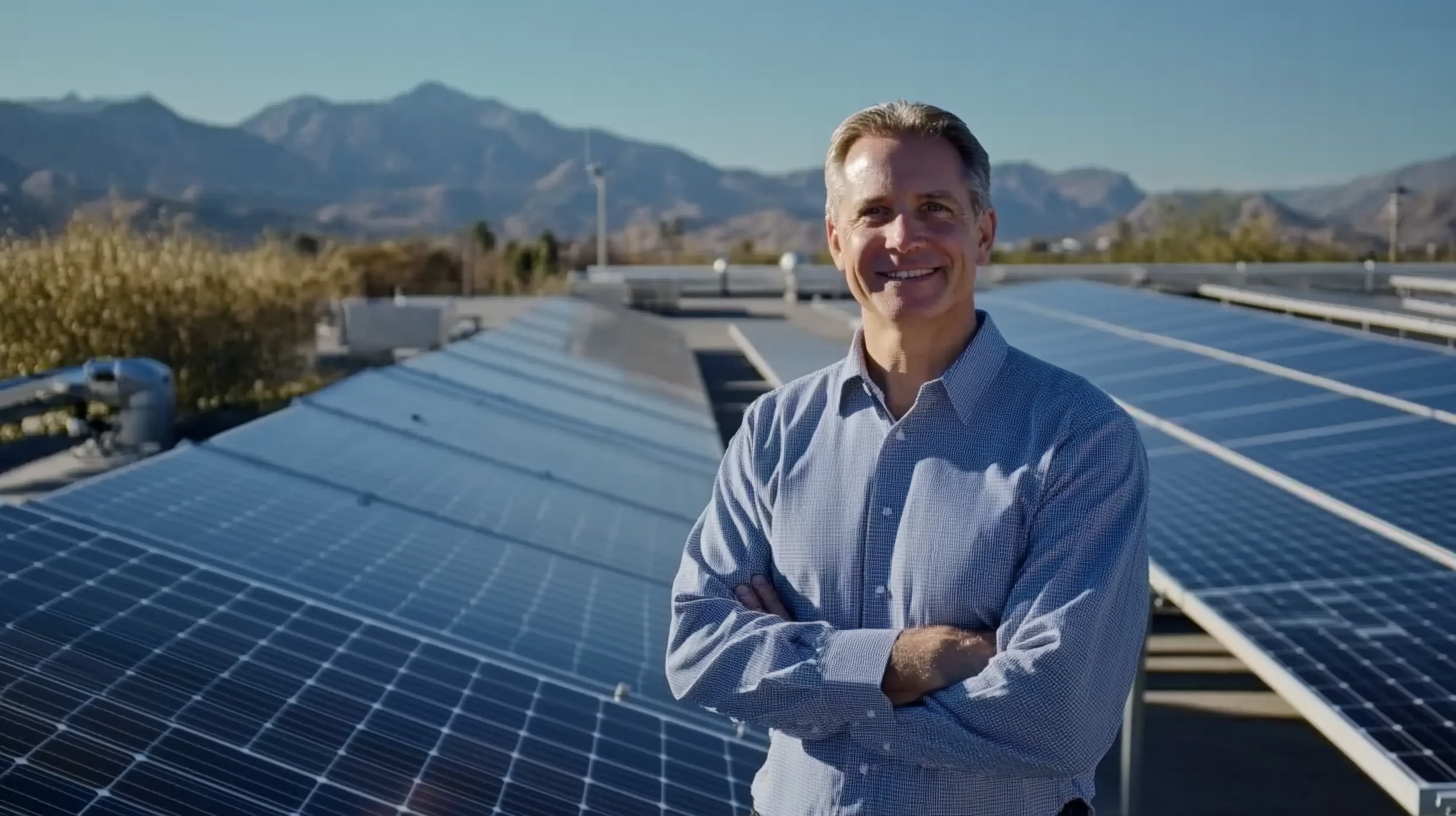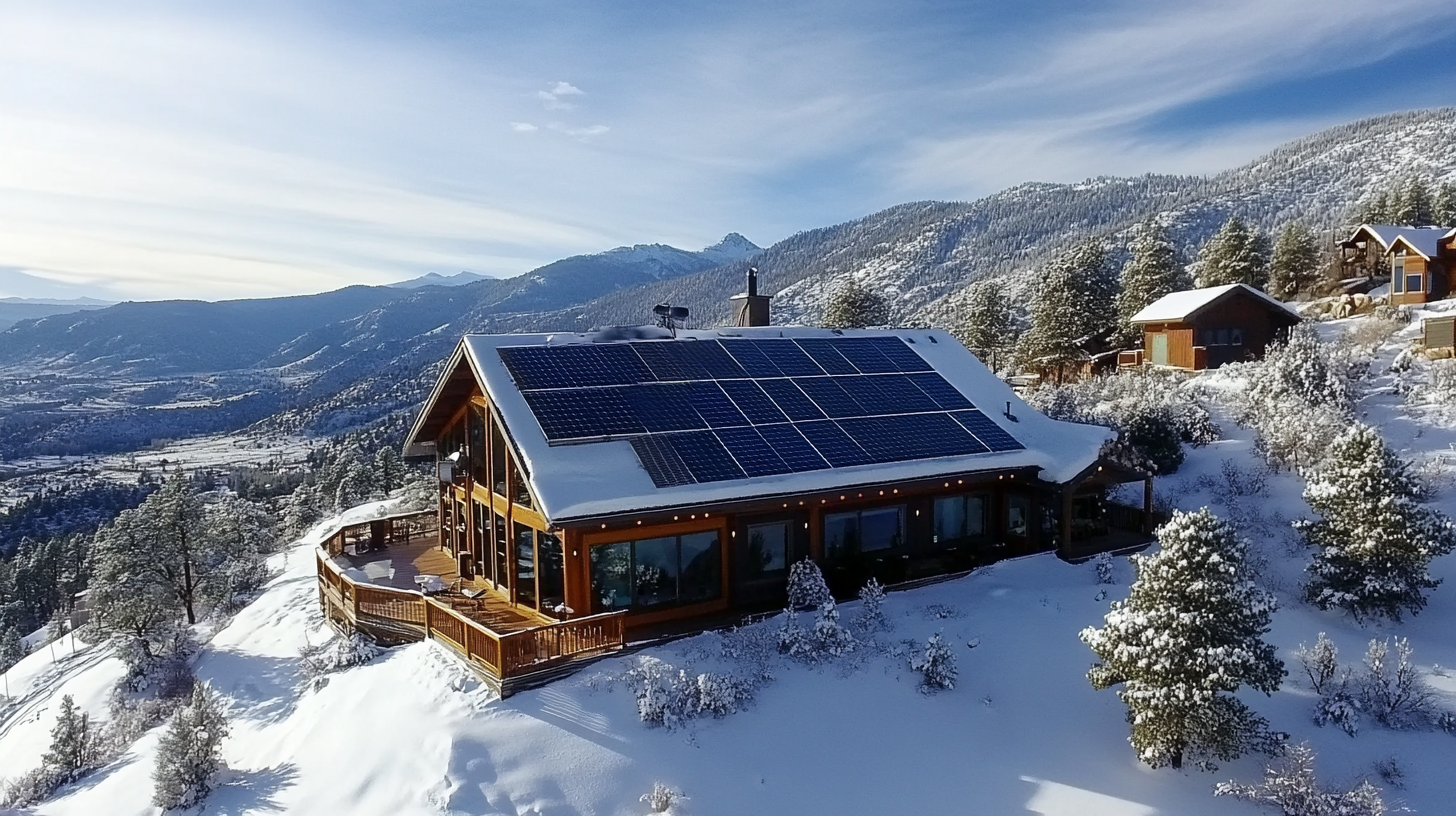Unlocking the Future of Renewable Energy with Innovative Power Solar Panels Solutions
As the world grapples with the pressing challenges of climate change and energy sustainability, the search for innovative solutions in renewable energy has never been more critical. Among the various technologies emerging to address these challenges, Power Solar Panels stand out as a transformative option. These advanced solar panel systems not only offer an eco-friendly alternative to conventional energy sources but also promise to enhance energy efficiency and lower costs for consumers worldwide.
In this blog, we will explore the future of renewable energy through the lens of innovative Power Solar Panels solutions. We will delve into the technological advancements that are propelling solar energy into the forefront of the energy landscape, examine how these solutions can make a significant impact on reducing carbon footprints, and highlight the promising developments set to shape our energy future. By unlocking the potential of Power Solar Panels, we can create a sustainable tomorrow that meets the energy demands of our growing population while protecting our planet for future generations.

The Rise of Solar Power: Revolutionizing Renewable Energy Sources
The rise of solar power is transforming the landscape of renewable energy sources, marking a significant shift toward sustainable solutions. As countries worldwide grapple with climate change and depleting fossil fuels, solar energy stands out as a viable and efficient alternative. With advancements in technology and a growing public awareness of environmental issues, solar power has rapidly gained traction, becoming a reliable and accessible energy option for both residential and commercial use.
Innovative solar panel solutions are at the forefront of this revolution. New designs and materials have emerged, increasing efficiency and lowering costs, making solar installations more appealing than ever. From flexible solar panels that can be integrated into various surfaces to high-efficiency photovoltaic cells that maximize energy capture, the versatility of solar technology is enabling a diverse range of applications. This progression not only enhances energy production but also empowers individuals and businesses to take charge of their energy consumption.
Moreover, as governments implement favorable policies and incentives, the adoption of solar power is projected to accelerate. The integration of solar energy into existing grids and the development of energy-storage systems further bolster its potential. This interconnected approach enhances energy resilience, allowing communities to harness the sun’s power while minimizing reliance on conventional energy sources. As solar power rises, it signifies not just a trend but a fundamental change in how we approach energy generation, directing us toward a more sustainable and eco-friendly future.
Unlocking the Future of Renewable Energy with Innovative Power Solar Panels Solutions
| Feature | Description | Benefits | Impact on Renewable Energy |
|---|---|---|---|
| High Efficiency | Solar panels converting more sunlight into electricity. | Maximized energy output, reducing the number of panels needed. | Increases the adoption rate of solar energy solutions. |
| Durability | Built to withstand harsh weather conditions. | Longer lifespan and lower maintenance costs. | Promotes the reliability of solar energy systems. |
| Smart Technology | Integration with IoT for real-time monitoring. | Improved performance insights and energy management. | Encourages data-driven decision making in energy usage. |
| Eco-Friendly Materials | Manufactured using sustainable and recyclable materials. | Reduction in carbon footprint and environmental impact. | Aligns with global sustainability goals. |
| Affordability | Decreasing costs with advancements in technology. | Increased accessibility for consumers and businesses. | Accelerates the transition to renewable energy sources. |
Innovative Technologies in Solar Panel Design and Efficiency
Innovations in solar panel technology have revolutionized the renewable energy landscape, leading to enhanced efficiency and cost-effectiveness. According to the International Energy Agency (IEA), the global solar power capacity surpassed 850 GW in 2020, a testament to the advancements in solar technology. The continuous improvement in photovoltaic (PV) cell design has significantly increased the energy conversion rates, with leading-edge solar panels achieving efficiencies above 22%. These advancements are largely attributed to the development of bifacial solar panels, which can absorb sunlight from both sides, maximizing energy harvest.
Another groundbreaking technology gaining traction is the integration of solar panels with energy storage systems. A report by Bloomberg New Energy Finance estimates that the global energy storage market could grow to over 1,000 GWh by 2030, significantly complementing the productivity of solar power. This integration not only enables better management of energy supply and demand but also provides a reliable backup during periods of low sunlight. Furthermore, advancements in materials science have led to the introduction of perovskite solar cells, which promise higher efficiency at lower production costs, potentially revolutionizing the solar energy market.
With the innovative focus on recycling and sustainability, modern solar panel designs emphasize eco-friendly materials and manufacturing processes. Research from the National Renewable Energy Laboratory indicates that new recycling technologies can recover up to 90% of materials from end-of-life solar panels, reducing waste and environmental impact. As we continue to unlock the potential of renewable energy, these innovative technologies in solar panel design and efficiency will play a critical role in shaping a sustainable energy future.

The Economic Benefits of Switching to Advanced Solar Solutions
As the world increasingly turns to renewable energy sources, the economic advantages of adopting advanced solar solutions become more apparent. With innovative power solar panels entering the market, individuals and businesses alike can experience significant cost savings. These cutting-edge technologies not only enhance efficiency but also lower energy bills, making solar energy a financially viable option for many.
Investing in advanced solar panels can lead to substantial long-term benefits. Homeowners and companies can take advantage of government incentives and rebates designed to promote sustainable energy use. This initial investment pays off over time as reduced electricity costs contribute to overall savings, effectively offsetting the upfront expenditure. Moreover, solar solutions often increase property value, making them an attractive proposition for potential investors and buyers.
Additionally, the longer lifespan and improved durability of today's solar panels mean lower maintenance costs, further contributing to their economic appeal. The shift towards advanced solar technologies not only fosters personal financial growth but also stimulates the local economy by creating jobs in the renewable energy sector. This collaborative advancement toward sustainability is not just beneficial for individual users; it plays a crucial role in promoting a stable, green economy for future generations.
Unlocking the Future of Renewable Energy with Innovative Power Solar Panels Solutions
This pie chart illustrates the economic benefits of switching to advanced solar solutions, highlighting the potential savings and returns on investment for consumers and businesses.
Overcoming Challenges: Addressing Common Barriers to Solar Adoption
The growing concern over climate change and energy sustainability has propelled solar energy into the spotlight as a solution worth exploring. However, the journey toward widespread solar adoption is fraught with challenges that we must actively address. One significant barrier is the initial cost of solar panel installation, which can deter homeowners and businesses from making the switch. To counter this, innovative financing options like power purchase agreements (PPAs) and solar leasing can alleviate upfront costs, making solar energy more accessible to a broader audience.
Another common obstacle is the lack of adequate information and awareness about solar technology and its benefits. Many potential users remain skeptical about the efficiency and reliability of solar panels, often due to outdated perceptions. Education campaigns and community programs can foster greater understanding and trust, highlighting success stories and showcasing advanced technologies that have improved solar efficiency. By empowering individuals with knowledge, we can cultivate a culture of acceptance and enthusiasm around solar solutions.
Finally, regulatory and infrastructural challenges pose significant roadblocks to solar adoption. Variations in government incentives, zoning laws, and grid connectivity can create confusion and inhibit progress. To streamline the process, collaboration between solar companies and local governments is essential. Advocating for standardized regulations and offering incentives can pave the way for smoother installations and more robust solar ecosystems. By tackling these barriers in unity, we can unlock the full potential of solar energy and usher in a sustainable future.

The Future Outlook: Trends Shaping the Solar Energy Landscape
The landscape of solar energy is rapidly evolving, driven by technological advancements and a growing demand for sustainable solutions. One of the most significant trends shaping this sector is the rise of innovative solar panel technologies that maximize efficiency and minimize costs. Bifacial solar panels, for example, capture sunlight from both sides, increasing energy output and allowing installations to generate more energy per square meter. This innovation not only enhances the return on investment for solar installations but also encourages more widespread adoption in both residential and commercial sectors.
Another notable trend is the integration of energy storage systems with solar panels. As solar energy becomes a dominant player, combining it with battery storage solutions ensures a continuous supply of power, even when the sun isn't shining. This synergy is crucial for overcoming the intermittency of solar energy and creating a reliable energy source that can power homes and businesses around the clock. Furthermore, advancements in smart grid technology and energy management systems are encouraging the efficient use of this stored energy, facilitating a more resilient and sustainable energy ecosystem.
As governments and organizations push for greater environmental responsibility, policies encouraging renewable energy adoption will likely amplify these trends. Incentives and subsidies are becoming more common, making solar energy projects more financially accessible. Coupled with increasing public awareness of climate issues, the future of solar energy is poised for significant growth, shaping a cleaner and more sustainable energy landscape for generations to come.
